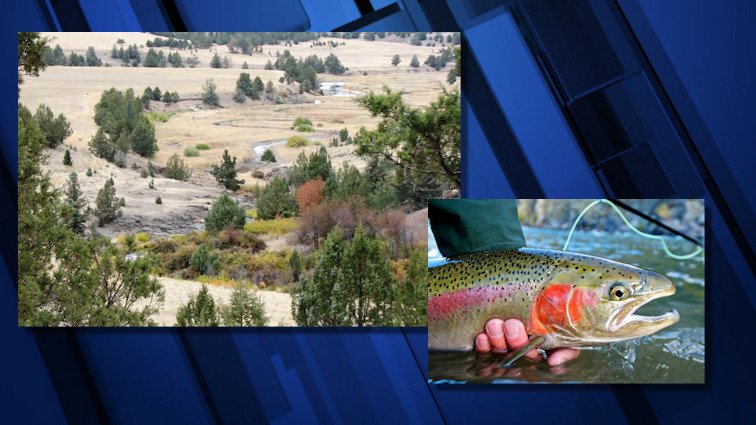FlyFisher Foundation grant to enhance upper Trout Creek habitat for wild steelhead

BEND, Ore. - The Deschutes River Conservancy announced Wednesday that flows in some of the most critical wild steelhead habitat will continue to be bolstered, thanks to a grant from The FlyFisher Foundation, a group founded in 1961 to preserve the art, science and history of fly-fishing.
The Oregon Department of Fish & Wildlife estimates that 20-30% of the wild steelhead that enter the Deschutes Basin return to Trout Creek to spawn. However, the creek is greatly impacted by irrigation use and doesn't maintain the flow needed to support habitat for productive spawning and rearing of steelhead.
The DRC, National Fish and Wildlife Foundation, and now the TFF are working to fix this problem.
Upper Trout Creek is about 90 miles from Bend and flows through the town of Ashwood. It crosses Highway 97 about 15 miles north of Madras, then meets the Deschutes north of the Pelton-Round Butte dams complex, near the community of Gateway.
Steelhead spawning extends into the upper reaches of Trout Creek on almost exclusively private lands. The DRC currently has a water use forbearance agreement with a prominent landowner to keep their state-allocated water rights instream. By curtailing water withdrawals from the creek during peak summer months, the increased streamflow is giving summer-run steelhead a much better chance to complete their life cycle.
However, this landowner is a working farmer and rancher, and should be compensated for volunteering to curtail their water use. This is where TFF comes in. By providing funding, TFF is ensuring participating water rights holders are compensated, the DRC has the capacity to monitor and manage the project, and 2 critical cubic feet per second (cfs) of water can remain instream when it’s most needed.
The initial grant is for $10,000, with a possibility of more from proceeds of the foundation's fundraising dinner.
Beyond the water, this project plays a crucial role in continuing the efforts of building strong relationships with landowners in the basin. Through these relationships, the DRC can extend our work with landowners and partners into additional stretches of water, significantly improving conditions for migrating, spawning, and rearing steelhead.
“We are extremely grateful to be partnering with TFF on this project and look forward to the work ahead - together,” said Kate Fitzpatrick, Executive Director of the DRC. "Diverse funding sources provide the foundation for DRC's collaborative work that supports both agriculture and the environment."
While much of the DRC’s work has been focused on the upper and middle sections of the Deschutes, the organization recognizes the interconnectivity of the river system and has been diligently pursuing opportunities to extend its work below Lake Billy Chinook and the Pelton-Round Butte Dam Complex.
"We're proud of the work we've done to improve the health of the Deschutes River Basin," said Fitzpatrick. "But there's still much more to do. We look forward to continuing our work with landowners, government agencies, and other partners to find solutions that benefit the environment and the people who rely on it."
The Deschutes River Conservancy was formed in 1996 with a mission to restore streamflow and improve water quality in the Deschutes River Basin. The DRC has a multi-stakeholder board and through collaborative efforts has restored up to 208 CFS (equivalent to 93,357 gallons per minute) of flow in the basin with non-litigious, voluntary, and market-based programs. For more information about the DRC visit www.deschutesriver.org.